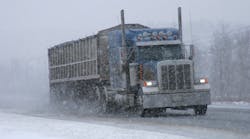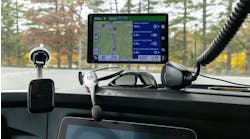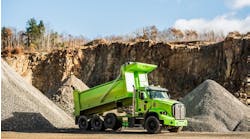Video safety and telematics provider Lytx has rolled out hazardous weather alerts as a project within the Lytx Lab. All fleet customers will be able to use the new feature, the company announced Oct. 13.
The alerts allow fleet managers to get notifications based on geospatial criteria and National Oceanic and Atmospheric Administration (NOAA) weather data to facilitate real-time decision-making for safer and more efficient driving. This new AI-powered geospatial technology was built on the Lytx Vision Platform. It was developed within Lytx Lab, where Lytx engineers and safety experts collaborate with customers to address market needs.
The U.S. Federal Highway Administration reported that 21% of the roughly 5.8 million vehicle crashes yearly are related to adverse weather, including snow, fog, rain, sleet, wind, and blowing debris. Additionally, more than 70% of U.S. roads are located in regions with more than five inches of snow annually.
See also: Gaskins: To focus on safety is to focus on efficiency
"Road conditions and the role inclement weather can play on them has a huge impact on drivers and driver safety," Dan Lambert, Lytx's senior director of product management, told FleetOwner. "Knowing the high number of vehicle crashes that occur each year due to poor weather conditions and the high costs associated with those, we saw this as a market need and a way for us to expand our AI-powered geospatial solutions."
Anticipating risks, preventing accidents
Lytx's Weather Hazard Alerts overlay NOAA weather warnings (including thunderstorms, floods, tornadoes, snow, and more) onto fleet maps. Fleet managers can filter Weather Hazard Alerts by geographic location, timeframe, and type of severe weather. Once the filtered conditions are met, an alert is automatically sent to the fleet manager with a description of the event, an image on the map, how many vehicles may be impacted, and when and where that weather event is forecast to occur.
Rajesh Rudraradhya, Lytx's chief technology officer, said the new offering combines the power of Lytx's existing data network with AI that "understands context." With this combination, Lytx can provide its customers with insight into enhancing their safety.
"Through the application of machine vision and artificial intelligence technology to analyze vehicle imagery from vehicles in hazardous conditions," Rudraradhya explained, "we are actively progressing toward the creation of highly localized weather alerts, advancing our predictive intelligence to anticipate potential risks and proactively prevent accidents."
See also: Lytx observes 25th anniversary, hints toward the future
For a more proactive approach, fleet managers can also view current images from the Lytx network to see weather conditions in real-time on specified routes. This enables more accurate condition assessment and better decision-making.
"With the power and range of our Lytx network combined with near real-time data via our road-facing cameras, we're able to provide timely and extremely accurate weather information that can help reduce weather-related incidents," Lambert said.
The Weather Hazard Alerts feature is now available to all U.S. Lytx network fleet managers.
"The customer feedback we've received during our development program has allowed us to rapidly surface key insights that ultimately create safer environments for drivers, passengers, and the public," Lambert added.
The Driver Alerts component is currently being tested with select clients within Lytx Lab, and the testing will be expanded to more drivers and fleets next year, Lambert told FleetOwner. With Driver Alerts, a driver is notified via in-cab audio of weather alerts as they approach hazardous areas, helping them to proactively reroute before encountering unsafe weather.




